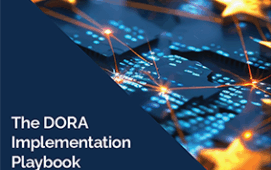
Clausematch has released an open-source digital regulatory knowledge graph aimed at providing the financial regulatory community with a framework to assess how AI and knowledge graph technologies can be applied to reporting. The idea is to encourage regulators to publish their rules and regulations in the form of structured datasets, or knowledge graphs, as with the digital regulatory rulebooks, which can yield substantial benefits for reporting firms.
Regulators and regulated entities in financial services are able to test the knowledge graph to see how regulation in a structured digital format works. Clausematch reckons the AI developments underlying the knowledge graph fundamentally transform the approach to understanding regulations and how compliance can be achieved.
The knowledge graph is the latest of a number of initiatives Clausematch has been involved in with financial services regulators since 2019. In this instance, Clausematch worked with Abu Dhabi’s Financial Services Regulatory Authority to reimagine the regulatory framework, taking the content of regulatory requirements, automatically categorising them using advanced AI models, and creating tags focused on regulatory concepts, obligations and expectation.
With digital regulatory rulebooks, the expectation is that financial institutions will be able to gain a deeper contextual understanding of the current applicable legislation and apply requirements more effectively and efficiently. In this scenario, the knowledge graph will become a source of digitised rules available for the use of decision automation systems.
With the help of AI models, the knowledge graph will extract the understanding of regulations and embed it in a structured, dynamic, machine-executable form. Eventually, this will enable more institutions and firms to foster greater governance practice and transparency in their daily operations being compliant by design.
“There is a growing sense that authorities need to work together to regulate the world more effectively, learn from and leverage each other’s experiences, and avoid silos of expertise and skills,” says Vladimir Ershov, Head of Data Science and Machine Learning at Clausematch.
“By introducing dynamic knowledge graphs in open source, Clausematch proposes an approach where the regulator first digitises its very understanding of regulation by creating models for tagging and for relation extraction and then, these models are released within the regulations for regulated companies. Thus, any company can receive an in-house regulatory advisor to carry on with taxonomy and rules interpretations.”
AI allows firms to process large amounts of data. With the number of processes increasing, automation can support the deep analysis of content produced by both the regulators and the regulated firms. By training AI for rule interpretation tasks, it’s possible to capture the understanding of the regulation and put it into digital form so that it can be copied and reproduced an unlimited number of times.
With digital regulatory rulebooks, Clausematch believes, financial institutions will gain better contextual understanding of legislation and apply requirements more effectively and efficiently, enabling more institutions to foster greater governance practice and transparency in their daily operations.
The elements of the newly released project are already in use at financial services organisation. The trained models are helping Clausematch clients identify relationships between internal policies, procedures, obligations, and regulations, which allows them to understand gaps and manage regulatory changes more efficiently.
Furthermore, these AI capabilities enhance the policy writing experience by managing consistency and removing contradictions throughout the content. This technology promotes better content comprehension by making it easier to search for, access, and consume. It accomplishes this by allowing users to find answers, rather than documents.
Subscribe to our newsletter




